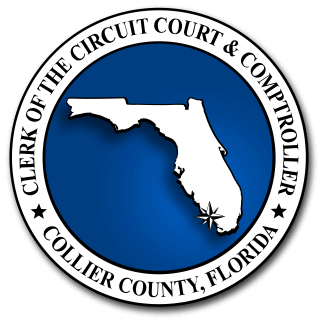What kind of case should you file when you need to have someone removed from your home? There were three types of cases to be filed prior to a legislative change effective July 1st, 2024. Listed below are the definitions for each type of case, as well as the 4th type established this year. Remember that, as Clerks, we do not provide legal advice, however we may provide appropriate court approved forms or information to assist you.
 Eviction
Eviction
The first type of case is an eviction case or cause of action for tenant removal action. Eviction laws are found under Chapter 83 of the Florida Statutes. An eviction action is appropriate when the person to be removed from the property has an agreement, either oral or written, to pay rent to the landlord. This action is filed in county court unless the landlord is seeking more than $50,000 in damages, which would move it to circuit court. A cause of action for eviction may be made in the event the tenant breaches the lease for any reason, such a failing to pay rent, damaging the property, or failing to leave upon expiration.
Ejectment
The second type of case is an ejectment. Ejectment laws are found under Chapter 66 of the Florida Statutes. An ejectment action is appropriate when the person to be removed from the property claims he or she owns the property, although it belongs to another. This is an action to recover property from a party with inferior right to possession than the owner. This action should be filed in circuit court. An example of an ejectment case is when a person legally purchases a piece of property and records the deed. The former owner then fraudulently sells and deeds the same property to someone else. The second person moves into the property and claims he or she owns it. The first person to purchase the property would file an ejectment case.
Unlawful Detainer
The third type of case is an unlawful detainer. Unlawful detainer laws are found under Chapter 82 of the Florida Statutes. An unlawful detainer action is appropriate when the person to be removed from the property does not have an agreement to pay rent, does not have permission to stay on the property, and does not claim to own the property. This is an action for the removal of a transient occupant. This action should be filed in county court unless the filer is seeking over $50,000, which would move it to circuit court. An example of an unlawful detainer case is when a property owner lets his or her former significant other or relative live in his or her home and later tells him or her to leave, and he or she refuses. The property owner would file an unlawful detainer case.
Removal of Unauthorized Persons
The “right to exclude others” is a fundamental right of property ownership. By refusing to leave, a squatter violates the property owner’s right to exclude and his or her freedom to enjoy the property as he or she desires. Due to a nationwide increase in reports of “squatters” unlawfully entering residential property and refusing to leave when asked, Florida Statute 82.036 was created. Effective July 1, 2024, this new law can be used to quickly restore possession of residential real property to the lawful owner without delay. The immediate removal of unauthorized persons will limit the opportunity for criminal activity.
Under this new process, a property owner or his or her authorized agent may file a verified complaint with the sheriff in the county in which the property is located for the immediate removal of such unauthorized persons. Upon verification of the identity of the person filing the complaint and verification of the person’s right to possess the real property, the sheriff must serve notice to the unlawful occupants to immediately vacate the property. The statute allows the sheriff to charge a fee for this service as well as a reasonable hourly rate if the property owner requests the sheriff’s assistance in keeping the peace while changing the locks and removing the unlawful occupant’s personal property from the residence.
In order to utilize this limited alternative process, all of the following conditions must be met:
- The person requesting the removal of an unauthorized person is the property owner or the authorized agent of the property owner.
- The real property being occupied includes a residential dwelling.
- An unauthorized person or persons have unlawfully entered and continue to remain or reside on the property.
- The real property was not open to the public at the time the unauthorized person entered.
- The property owner has already directed the unauthorized person to leave the property.
- The unauthorized person is not a current or former tenant pursuant to a written or oral rental agreement authorized by the property owner.
- The unauthorized person is not an immediate family member of the property owner.
- There is no pending litigation related to the real property between the owner and any known unauthorized person.
- This new statute does not limit the ability of law enforcement to arrest an unlawful occupant for trespassing, vandalism, theft, or other crimes. This new statute also authorizes a person who is wrongfully removed from real property to file a civil case for costs and damages.
Remember, this is just a quick reference to these types of cases and remedies. An explanation is important because many people come to the clerk’s office saying they need to file an eviction when it really falls under a different category. Please remember to always consult with an attorney if you need assistance.

